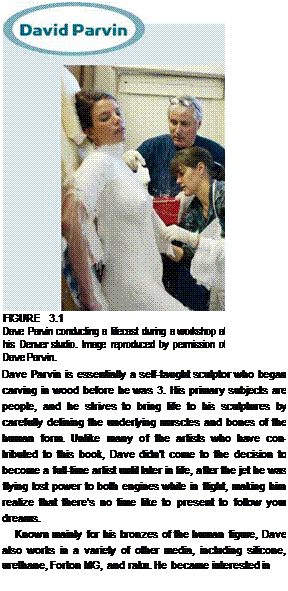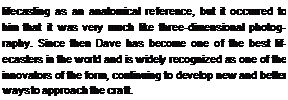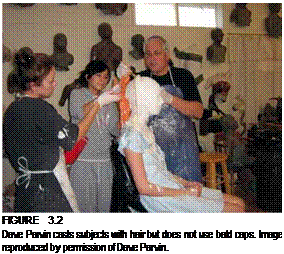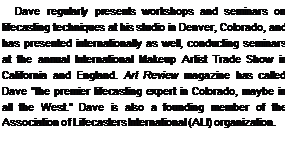From reading this chapter you should have gained a clearer understanding of how the computer can be put to work as a makeup design tool and how to determine what the elements of your design should be. The importance and relationship of human anatomy to character and creature design should make better sense, as should the subtlety and nuance of surface anatomy, symmetry and proportion, and ways to create believable distinctions of gender, age, and ancestry in your character or creature makeup design.
■ Safety risks
■ The materials
■ The process
■ Lifecasting teeth
■ Lifecasting face and neck
■ Lifecasting full head and shoulders (bust)
■ Lifecasting hands, arms, legs, and feet
■ Lifecasting full body, prone
Without intending to cause alarm, I begin this chapter with a disclaimer: Lifecasting has the potential to be quite dangerous if done incorrectly. Some of the materials used in lifecasting may encapsulate body hair, enclose or block orifices, cause serious allergic reactions, and create substantial heat that can cause serious burns. That being said, lifecasting is a skill that is not difficult to learn and, once learned, can be used to create myriad lifecasts of body parts, including full-body lifecasts.
Since this book is intended as both a makeup effects primer and one that also provides more advanced information, it is strongly suggested that if you have never done a lifecast before, you should take an in-person course or a workshop before attempting to go it alone. Though the information in this chapter is more than
 |
 |
 |
 |
sufficient for you to make a lifecast on your own, first get some training with a professional, before venturing into this domain. If you insist on being a self-starter, may I suggest, that you begin by making a cast of someone’s hand or foot rather than a head?
